It can be devastating when water gets into your vehicle's gas tank. Several things can go wrong, and your first response is to remove the water. So, how do you solve this problem before your vehicle is damaged internally? To find out more, read ahead!
You can remove water out of your tank by using additives, and some of the best include:
- ISO-SHEET
- BG Ethanol Preventer & Fuel System Drier
- STP Water Remover
Keep reading to know the signs of water in your gas tank and the best additives to remove the water. Also, learn the damage this problem can cause your car. Get tips on preventing this problem from occurring in the first place, and if it ever did, never happen again.
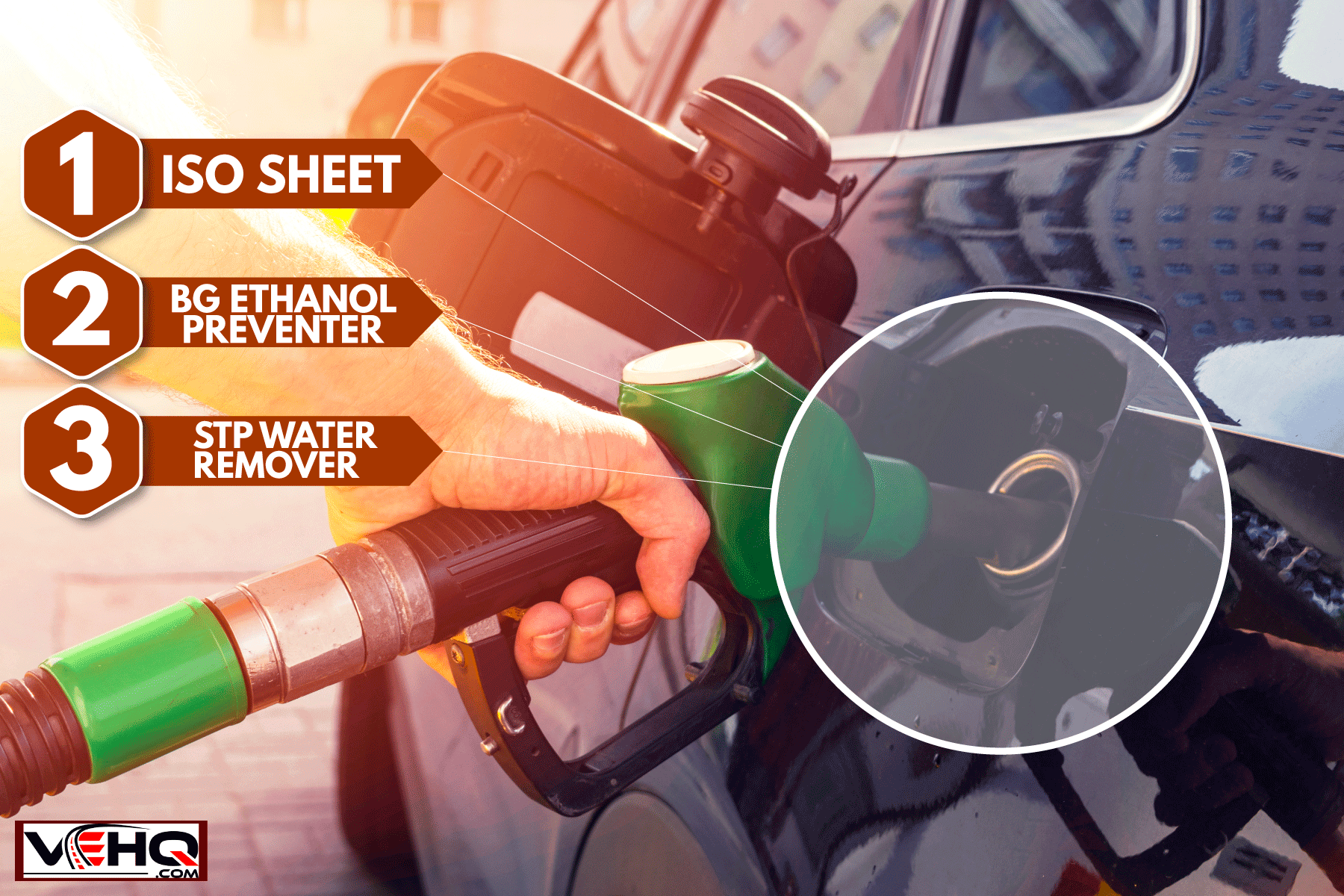
The Best Additives To Remove Water Out Of Your Car’s Gas Tank
We'll look at three types of additives that remove water from your fuel.
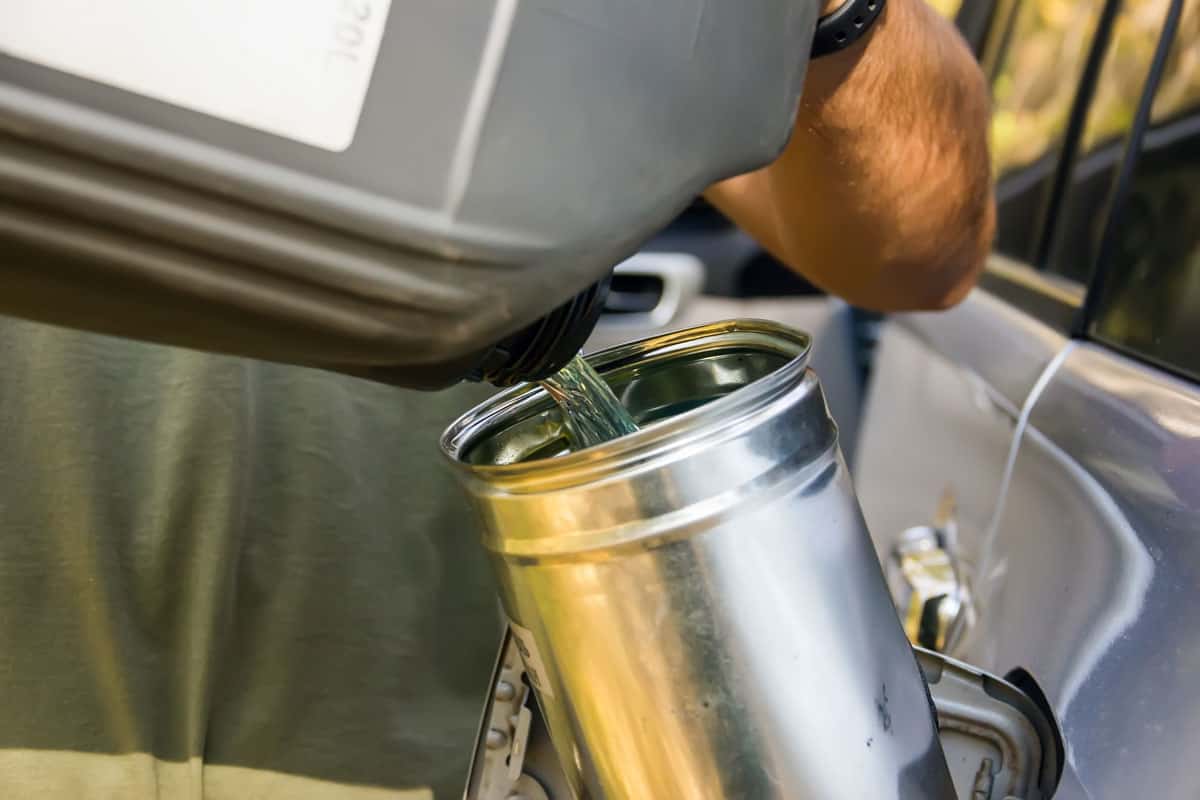
These include:
1. ISO-HEET
ISO-HEET is an efficient chemical for removing water from your fuel tank. It can remove up to 5 times the water than other additives would.
One bottle is enough for 20 gallons of fuel.
It works as an anti-freeze and has a property that prevents rusting in your car’s fuel system. During summer, this additive will remove moisture formed due to condensation.
When To Use ISO-HEET
When it's hot, and moisture enters your gas tank, you will need to use ISO-HEET. And, during the cold season, water, if not removed, may end up freezing, preventing your car from starting.
It's therefore advisable to use it when the weather forecast shows the temperatures will fall to 20 degrees Fahrenheit and below for weeks to come.
You can use it as a preventive measure before moisture freezes inside your fuel tank.
How ISO-HEET Works
Check out this ISO-HEET on Amazon.
When you add a bottle of ISO-HEET into your tank, it bonds to any water present and descends to the bottom. This is because they are heavier than gasoline.
It stops the water from freezing, which would otherwise block fuel flow through the gas line and fuel pump. The moment you start your car, combustion takes place inside the engine.
This process consumes gasoline, water, and methanol, an additive constituent.
But, you may wonder why methanol is part of the additive when fuel already contains methanol. Well, ISO-HEET provides added protection against water freezing inside the tank.
Is ISO-HEET Safe For Your Car?
This additive will not damage any parts inside your car. It prevents your fuel system from rusting and keeps it clean.
2. BG Ethanol Fuel System Preventer & Drier
This additive is as efficient as ISO-HEET and works by absorbing the moisture inside your fuel tank. It suspends the water on top of the fuel and is removed as the fuel burns in the engine to produce energy.
It prevents water from turning into ice inside the tank and does not block fuel flow.
It provides a protective coating inside the fuel system, preventing corrosion and cleaning it. This is because this additive contains exceptional stabilizers that do not allow fuel to oxidize.
In addition, they intercept the formation of gum and varnish produced by ethanol, a component of gasoline.
3. STP Water Remover
Have a look at this product on Amazon.
This additive works just like the other two previously mentioned, like the one shown above.
It prevents water from freezing inside the fuel tank when it is freezing and stops condensation during warm weather. It also helps your vehicle's fuel system to operate optimally as it wards off the rust.
When you want to use it, pour all the contents inside the bottle into your gas tank. However, make sure your tank is at least half-full.
How Does Water Enter Your Fuel System?
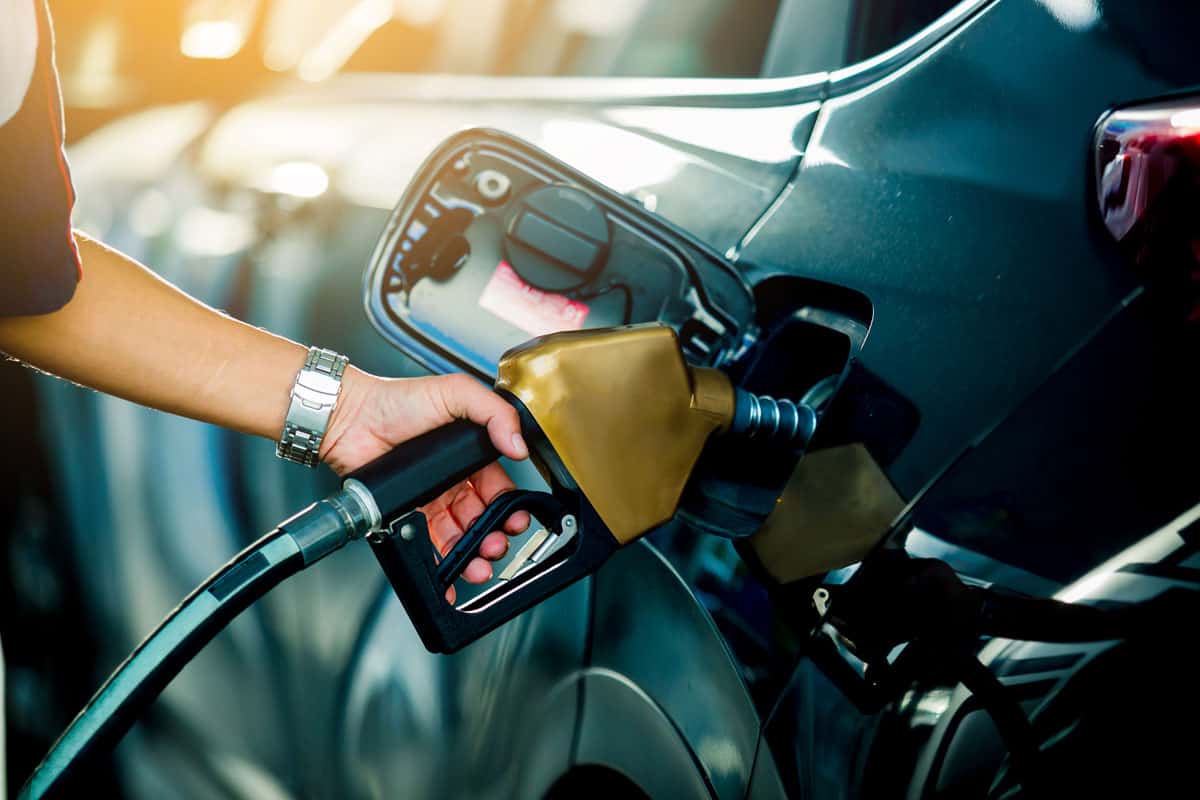
Water is often present in the fuel you buy. When the temperatures fluctuate during the day, condensation forms water in your tank. This will also happen during humid weather, especially if you have not sealed your fuel cap properly.
Moreover, in times of flooding, if the water reaches the fuel cap, it will enter the tank. Therefore, it would be good to ensure you have closed the lid tightly with no gaps during the monsoon season.
Water could also accidentally enter your tank or even through a malicious prank.
What Happens When Water Enters The Gas Tank?
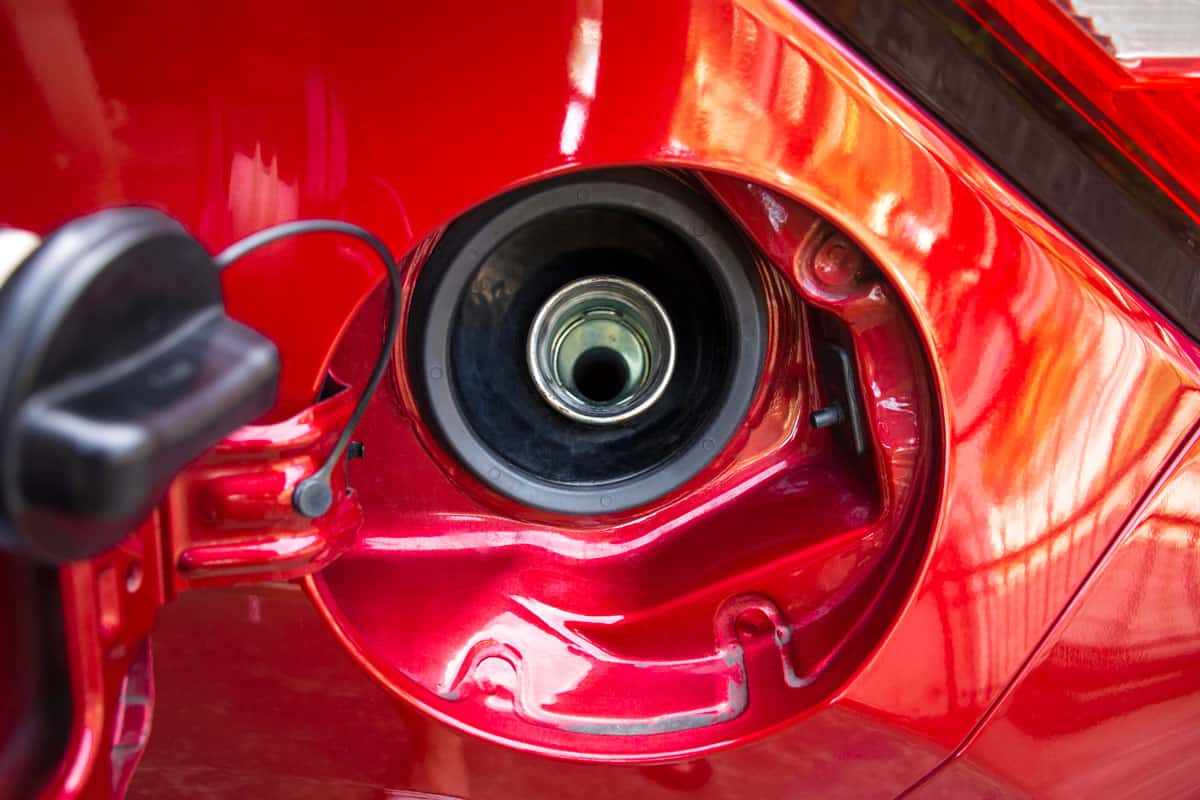
The entry of a foreign substance other than fuel into the gas tank can cause problems, some of them severe. Below are some issues that can happen due to water entering your tank:
Rust
Water and fuel never mix. Instead, water will sink to the bottom. And, if it stays there for a long time, the tank and other components of the engine will rust.
Faulty Injector
Injectors aid the fuel in moving into the combustion chamber. The fuel density is just right for the injectors to work efficiently.
But, when water is present, it complicates things. It causes the injectors to work under more pressure, damaging them.
Malfunction Of Fuel Pump
The fuel cools and lubricates your vehicle’s engine. But, when it mixes with water, it can cause the fuel pump to rust, impeding the overall working of the engine.
Interference With The Lubrication Process
When water mixes with the engine oil, it can interfere with its lubrication process. The problem escalates as more water enters the engine.
Engine Lock
If a combination of some or all of the above problems occurs at a greater intensity, it can lead to your engine locking. If the problem is extremely severe, you may have to replace your engine.
What Are The Symptoms Of Water In Your Fuel?
What if you are not aware that there is water in your gas tank? The signs to look out for are:
Sputtering, Bouncing, Or Shaking
Since water is not combustible, your vehicle may sputter, bounce or shake. If these problems present themselves after fueling your car, check if water is in the tank.
Ensure your spark plugs are in good condition, and check engine light is not on.
Sudden Increase Or Decrease In Power
You can know water is in your gas tank when you feel the engine is not powerful enough and suddenly surges forward. What happens is that the engine has a hard time compressing the water, leading to a loss of power.
So, if your vehicle was running fine before you filled the tank, and then presents these problems, check if water is inside your tank.
More Fuel Consumption
If you notice you are using more fuel than usual, check if water has mixed with fuel in your tank. But, first, be sure that the fuel filters are not clogged and that the motor is functioning optimally.
Vehicle Does Not Start
This is the worst-case scenario and could mean there is a lot of water in your tank. Your engine will not start if there is a pool of water on top of the pistons as you try to start your car.
This will happen because there isn’t enough fuel, and combustion cannot occur. Therefore, the engine will not start.
Tips On How To Prevent Water From Entering Your Gas Tank
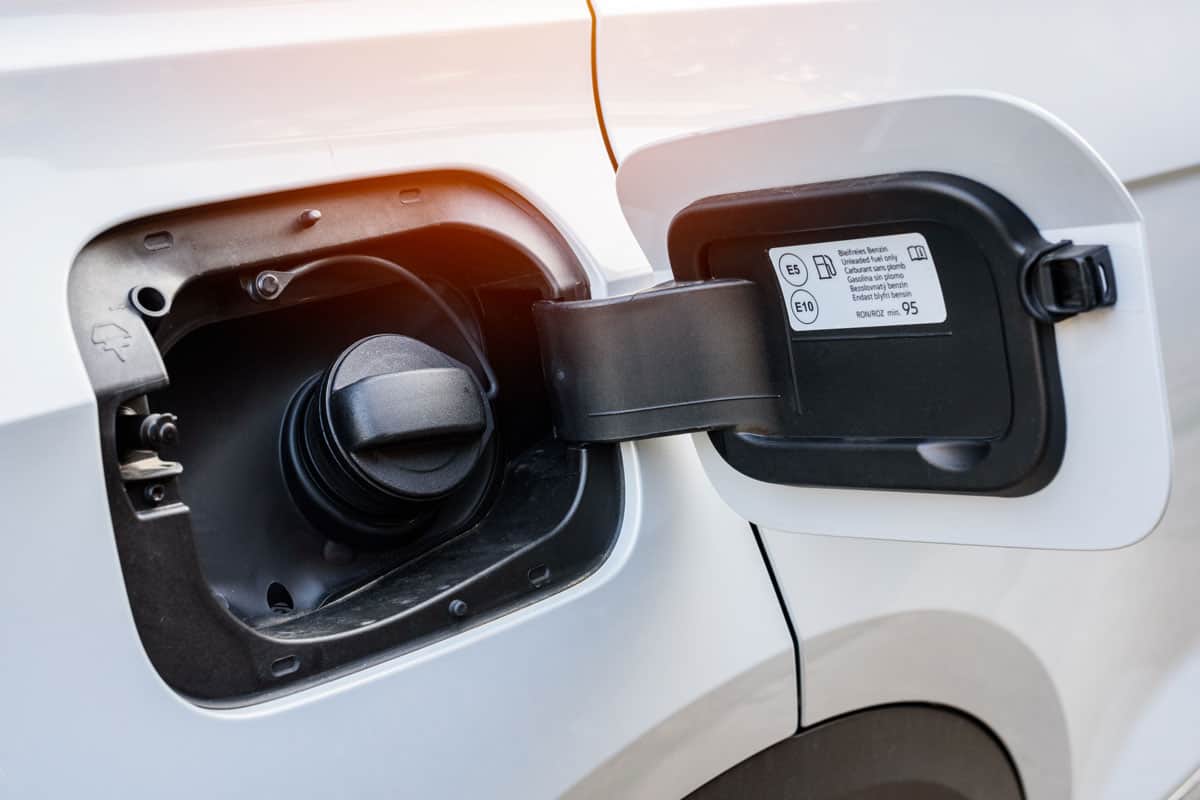
The following are a few helpful tips to prevent water from entering your gas tank:
- Check once a month for water, especially during the rainy season.
- Don’t allow the gas in your car to stay idle for a month or more.
- Have a contingency plan in case water enters your gas tank.
- Change your gas station if the fuel is frequently contaminated with water.
- Avoid flooded areas.
To Wrap Up
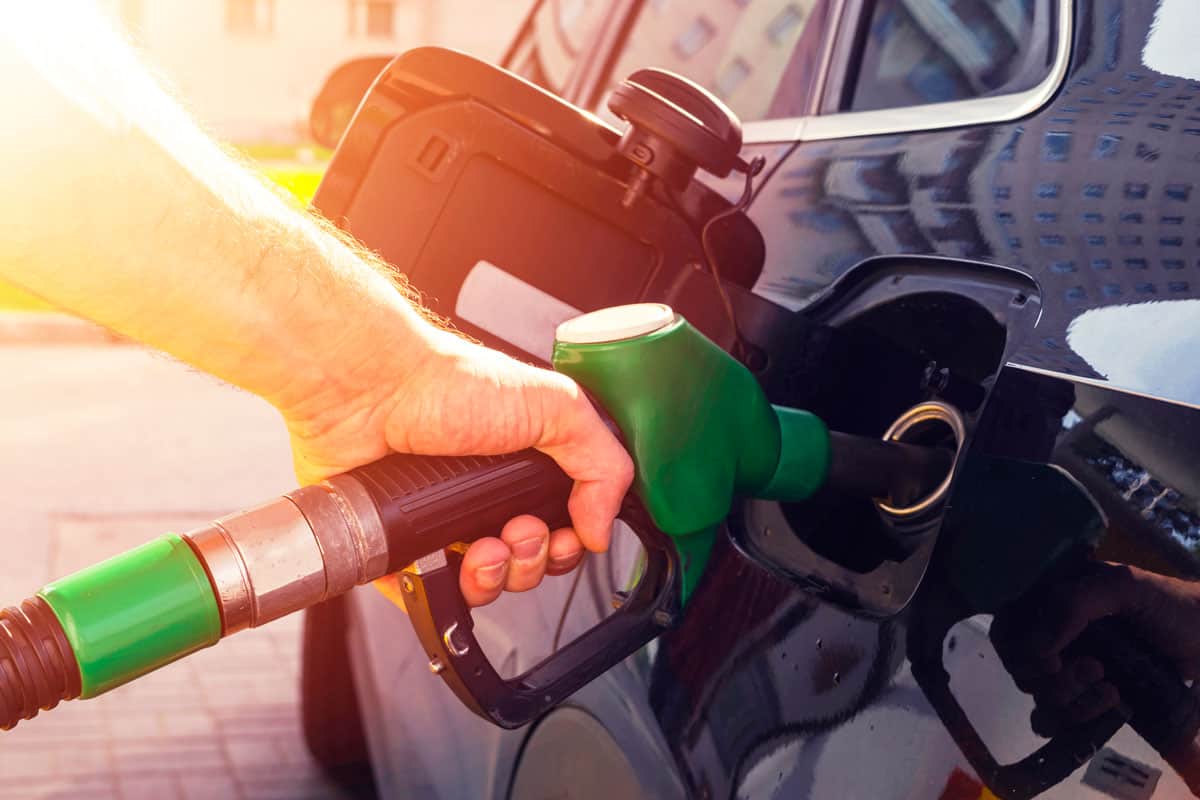
Take immediate action as soon as you realize water is in your fuel tank because water can damage your car. The good news is that there are additives that can help you remove the water.
There are signs to look out for mentioned in this post to help you know if there is water in your fuel. However, it is imperative to take precautions to prevent water from entering your car in the first place.
Thank you for reading this post. Check out these related topics below to keep reading!



Thank you for your help. My tank was on low and a gallon of gas was added by mistake. It was idling when it shut off. I’m going after additives and gas now. I don’t know what else to do. I’m 76 with a beat up body and I’m financially embarrassed. If you could think of something. I’d appreciate it. Thank you again